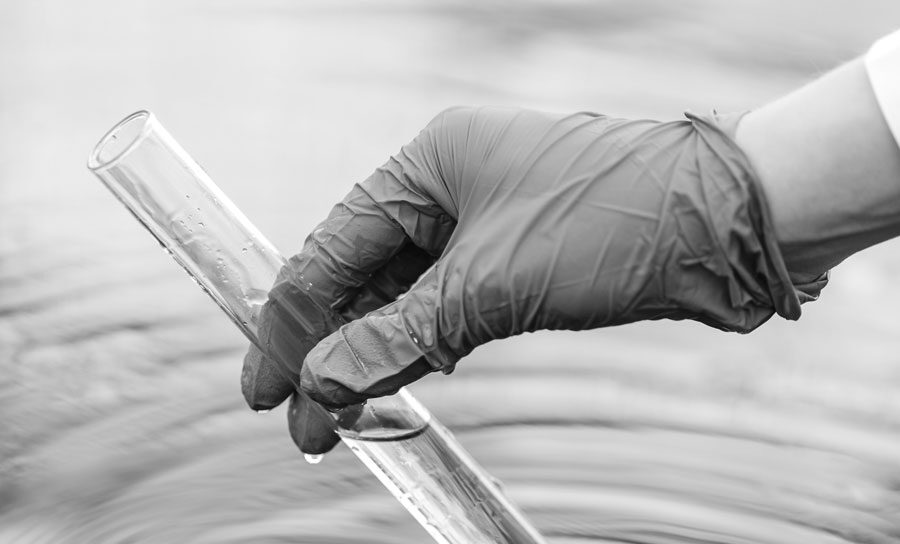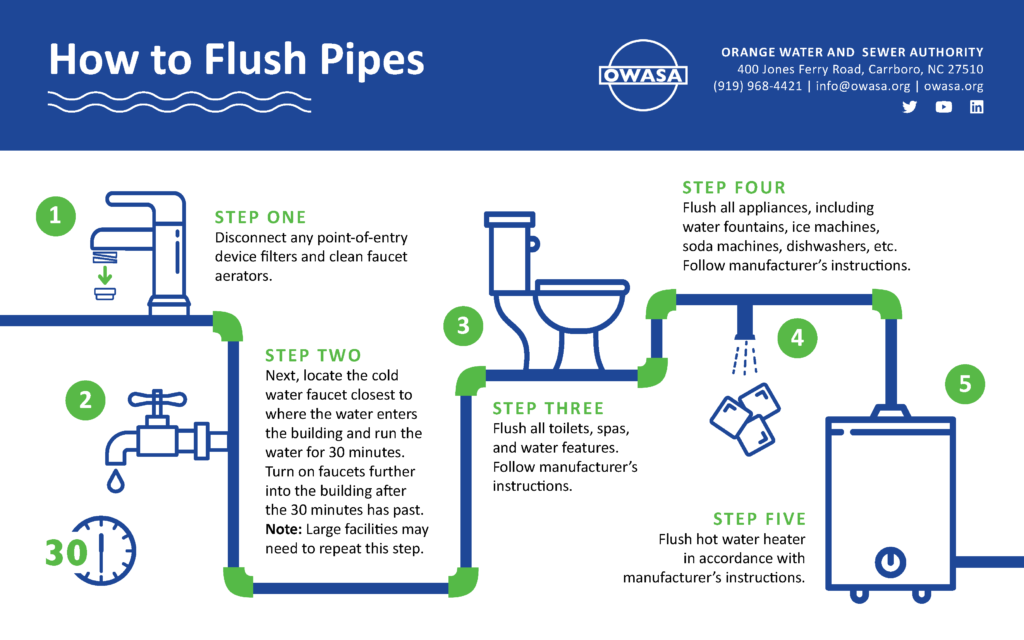What is a Boil Water Advisory?
A Boil Water Advisory is a public health recommendation from OWASA advising customers to boil their tap water before using it. This is in response to an event that could have allowed contaminants to enter the distribution system. Because the water quality is unknown, customers should assume the water is unsafe to drink and take appropriate precautions.
OWASA issues Boil Water Advisories as a precautionary measure. The Boil Water Advisory is a recommendation, and it is issued when contamination is possible, but unconfirmed. It is different from a Boil Water Notice, the next level of alert. A Boil Water Notice is issued when contamination is confirmed, and boiling water is therefore required.
Below are some answers to your frequently asked questions.
Boil Water Advisory Frequently Asked Questions
When does OWASA issue a Boil Water Advisory?
Typically, we issue a Boil Water Advisory after a water pipe break or repair, small or widespread loss of pressure in our water system or a natural disaster. In some cases, our crews can repair a water pipe while maintaining adequate pressure to prevent contamination from entering the water distribution system, and when we perform a repair in this way, no Boil Water Advisory is needed.
When we issue a Boil Water Advisory, we notify only the customers affected. If the risk of contamination is widespread, OWASA will arrange publicity in the news media, publish information on our website and more to inform the public.
How long will a Boil Water Advisory be in effect?
An advisory will remain in effect until bacteriological test samples show the water is safe to drink. Testing typically takes 24 to 28 hours to complete.
What should I do during a Boil Water Advisory?
Boil tap water before using it for drinking, making ice, washing dishes, brushing teeth, or preparing food. Bring tap water to a rolling boil for at least one minute and let it cool.
Should I use my coffee maker, water or ice dispenser when a boil water advisory is in effect?
During an advisory, do not use water from any appliance connected to your water lines, including water and ice dispensers in your refrigerator or freezer. Use boiled or bottled water to make coffee and ice.
How should I wash dishes during a Boil Water Advisory?
Household dishwashers are generally safe to use if the water reaches a final rinse temperature of at least 150 degrees Fahrenheit or if the dishwasher has a sanitizing cycle.
To wash dishes by hand:
- Use boiled water, or
- Wash and rinse dishes as normal. Then, in a separate basin, add one teaspoon of unscented household bleach for each gallon of warm water. Soak dishes in the basin for at least one minute. Let dishes air-dry completely.
Should I bathe or shower during a Boil Water Advisory?
It is safe to bath or shower, but be careful not to swallow any water. Use caution when bathing babies and young children. Consider giving them a sponge bath to reduce the chance of them swallowing water.
Can I wash my hands during a boil water advisory?
Yes. Vigorous hand-washing with soap and your tap water is safe for basic personal hygiene. However, if you are washing your hands to prepare food, you should wash your hands with boiled (then cooled) water or bottled water and hand-washing soap. Alternatively, you could wash hands with tap water, followed by the use of hand sanitizer.
What if I drank some of the water before I found out about the advisory?
This advisory was issued as a precaution, so your risk of getting sick is very low. However, if you begin to have a fever, diarrhea or nausea, seek immediate medical attention.
How will I know when the advisory or notice has been lifted?
We will rescind the Boil Water Advisory when the results from the testing have been confirmed that the water is safe to drink. You will receive your notification the same way you were informed of the advisory, whether that be by email or text, door hanger or a news alert in local media. You can also contact the Water Treatment Laboratory staff at 919-537-4228 or wtplaboratory@owasa.org.







